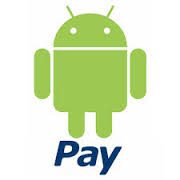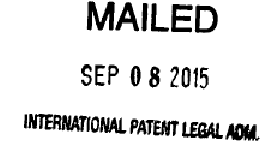In our patent firm, every day somebody needs to obtain a US patent or published US patent application as a PDF. We send the PDFs to clients and foreign agents and we save them to our own file servers for internal use.
US patent or published US patent application as a PDF. We send the PDFs to clients and foreign agents and we save them to our own file servers for internal use.
For many years USPTO went out of its way to make it very difficult for a user to obtain a copy of a US patent or published application, providing only TIF images (not PDFs) and those only one page at a time. Users wanting a PDF had to use software such as GetIPDL which would download the TIF images one by one and stitch them together into a PDF. Another approach for a user was to draw upon any of a number of private web sites for a multipage PDF of a patent. Some of these private web sites charged money for the PDFs, and one of them tacked an advertising message across the bottom of the first page of the PDF.
Now the USPTO has quietly changed its PatFT (patents full text) and AppFT (patent application full text) databases so that with the click of a mouse, the user can view a multipage PDF containing all pages of a patent or published application. With another click of the mouse (see the “full pages” button above), the user can download the PDF and make normal use of it.
Refreshingly, USPTO has done this in a way that tacks the Certificate of Correction (if any) onto the back of the PDF.
What one wishes, of course, is that USPTO would provide a “constructable” link which would directly yield the PDF file. The wish is that a link along the lines of https://www.uspto.gov/patents/7123456.pdf would retrieve a PDF of US patent number 7123456 and something similar for published US patent applications. As far as I can see the new USPTO system does not provide such a constructable link. Instead USPTO seems to have designed this new “full pages” link in a way that requires a human being to do the mouse clicks to obtain the PDF file.
Setting aside my disappointment about the lack of constructable links for the PDF files, the fact is that USPTO has moved closer toward actual user-friendliness in this area. Kudos to the USPTO!
 as that Softcard, the non-Apple digital wallet, had bitten the dust, and that Google had rather carefully not actually purchased Softcard but instead merely purchased its IP (mostly, its pending patent applications). This left Google Wallet as the successor app for Android phones. Google Wallet was decidedly clunky in several ways. Industry observers stood around waiting for Google’s next step, whatever it might turn out to be. Now we can see Google’s next step. It is Android Pay. Continue reading “Adopting a digital wallet – now Android Pay”
as that Softcard, the non-Apple digital wallet, had bitten the dust, and that Google had rather carefully not actually purchased Softcard but instead merely purchased its IP (mostly, its pending patent applications). This left Google Wallet as the successor app for Android phones. Google Wallet was decidedly clunky in several ways. Industry observers stood around waiting for Google’s next step, whatever it might turn out to be. Now we can see Google’s next step. It is Android Pay. Continue reading “Adopting a digital wallet – now Android Pay”

 US patent or published US patent application as a PDF. We send the PDFs to clients and foreign agents and we save them to our own file servers for internal use.
US patent or published US patent application as a PDF. We send the PDFs to clients and foreign agents and we save them to our own file servers for internal use.
